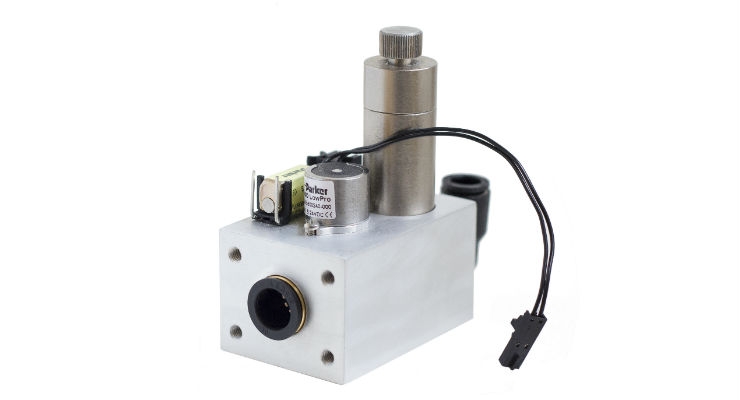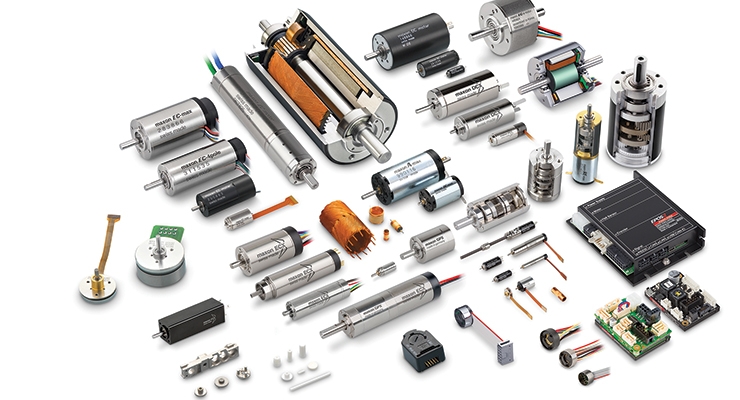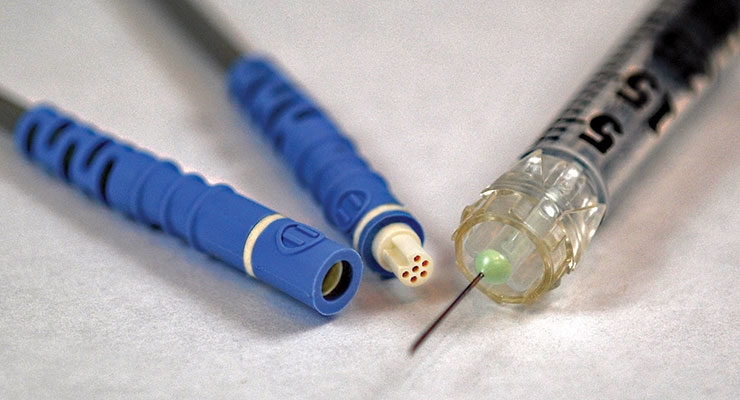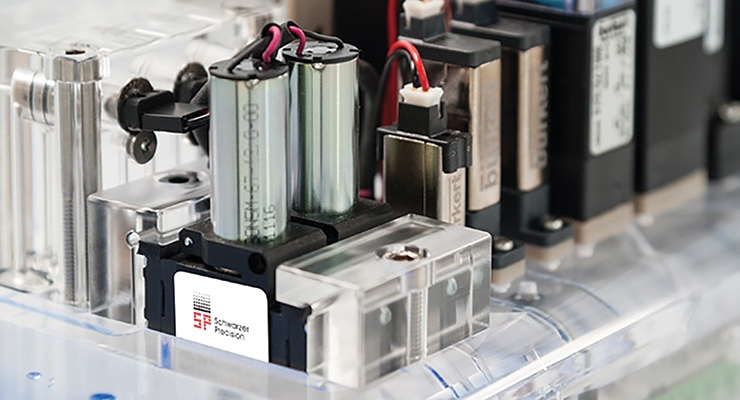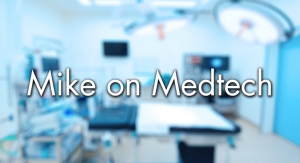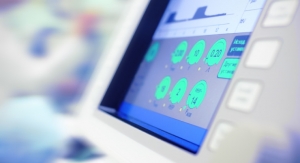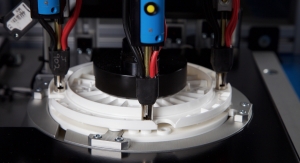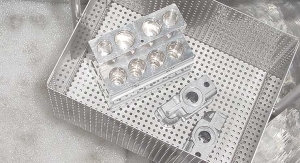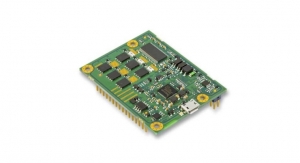Sam Brusco, Associate Editor09.01.17
E-commerce firms were among the first to discover the value of “mass customization.” The term sounds oxymoronic, but over the last few years, product customization has exploded in the online space, with consumers seeking mass customized goods from suits, handbags, and personal computers, to things like bicycles and shoes.
It has become so pervasive that some popular brands have rested their entire strategy on their penchant for personalization. For example, the NikeiD website lets customers select every facet of their shoes—the color of the bottom and top, the pattern and shoelace color, and buyers can even opt to have an inspirational note sewn into the shoe’s tongue (which can then be shared online, if the user so wishes). And it’s clearly working; according to Brand Channel, since 2004, NikeiD’s online business has tripled.
So why is customization so attractive, and more importantly to commercial organizations, so profitable? Some believe it represents part of a broader trend of many companies viewing customers as co-creators of value, rather than as beneficiaries. In selecting options for their product, the customer becomes an active participant in the “product development” process. The final “design” is a reflection of the consumer’s individual taste, and possessions can add more value to customers’ lives when they play a part in building them.
Introducing personalization as a product dimension has some intriguing effects on supply and demand. It forces companies to re-evaluate their product mix to construct the ideal ratio of mass-produced offerings with default specifications to those products prepared for customization. In order to evaluate this, manufacturers need to have real-time insight into operations—i.e., orders, returns, market trends, expectations, etc. This type of evaluation also requires real-time insight into the supply chain. If demand for a personalized product increases, can the materials to manufacture more of them be easily and expeditiously accessed? Without this information, a personalization offering can become incredibly difficult to deliver—and stifle profits.
Nowhere is product personalization more prevalent than in medicine. Each patient has a unique set of considerations for which adjustments must be made when determining treatment options. The movement toward “personalized medicine”—which includes digital health solutions to manage an illness or genetic testing for patient-specific treatments, among other factors—best exemplifies this idea. Combining this with the burgeoning personal medical electronics market leads to the proliferation of custom medical electronics, each of which require components not typically found on the shelf of a local electronics store. Traditional electrical part purveyors often don’t have the capacity to modify a part for a small-batch order, either.
“‘Off-the-shelf’ electronic components are not suitable for medical applications in which the form, fit, function, and actual or perceived reliability do not meet the requirements of the medical device,” explained Dr. Ravi Subrahmanyan, executive director of advanced technologies for Lake Oswego, Ore.-based Micro Systems Engineering Inc. (a Micro Systems Technologies company), which specializes in customer-specific solutions for microelectronics. “Many of these are situations where the supply chain cannot develop and support the technology node for standard medical components either due to limited market potential, obsolescence, or liability concerns.”
“In medical devices where motion components impact safety and efficacy, precision and performance are often critical,” commented Bob Kish, sales manager for Clearwater, Fla.-based MICROMO, a supplier of high-quality micro motion solutions to the medical, defense, and robotics markets. “The suitability of an ‘off-the-shelf’ component for these applications often depends on the range of available components, motion technologies, and the extent to which they can be configured to meet these challenging requirements. This is why we offer thousands of standard product configurations for linear and rotary micro motion applications, to help customers find a solution that meets their needs.”
Nearly every electrical component entering a medical device will likely be “custom” to some degree. Consider, for example, an insulin pump basing its delivery on a continuous glucose monitor’s readings. Building this potentially requires smaller parts to limit the intrusiveness of the device. The device will also likely operate on various “power modes,” necessitating electronics that can be configured for various power outputs. Those components are not going to be found at a local hardware store or from an electronics supplier dealing in standard parts.
Where they will be found is from electrical parts suppliers who can add value to their components for specific medical device projects. Device makers need a partner that can tailor a part to perform in the way their finished device requires. For this reason, many OEMs won’t take a second glance at a firm that doesn’t deal in custom options. Further, electronic component suppliers are now expected to act less like sellers, and more like partners—not only providing the hardware, but also the expertise and project support.
“With customers having limited engineering manpower, we have been able to act like an extension of our customer’s engineering team,” noted Colin Rademacher, area sales manager, microfluidics for Charlotte, N.C.-based Bürkert Fluid Control Systems, a manufacturer of measurement and control systems for liquids and gases for the medical device industry. “More than ever, our customers are asking us to leverage our knowledge over multiple fields (mechanical, electronic, and software engineering) to engineer and manufacture complex fluidic modules and sub-assemblies. Our customers are relying on us to provide value-add solutions that allow them to beat their competitors to market and grab market share.”
Firms providing custom options can also help to shorten an OEM’s supply chain. Rather than sourcing from multiple parts suppliers to collect the right mix of electronics—which forces device makers to maintain several relationships, each of which have separate requirements and their own set of nuances—one supplier can ideally provide the necessary resources.
“It is very important to provide value-added options, and as a manufacturer, there is a benefit to having core competency in more than one area,” stated Steven Lassen, products and applications manager for LEMO USA Inc., a Rohnert Park, Calif.-based designer and manufacturer of precision custom connection and cable solutions. “The more you can consolidate the supply chain, the more cohesive your end product will be. The customer may also require reduction in manufacturing steps.”
Culling the supply chain by partnering with a manufacturer well-versed in custom electronic parts also keeps the finished device’s quality requirements in check. Multiple sources means multiple sets of quality management systems, which can be, at best, a headache for OEMs, and at worst, a roadblock that adds costly time to the product development cycle.
“Quality requirements in the medical industry are very high,” said Carsten Horn, business development engineer, medical, for maxon precision motors, a Fall River, Mass.-based provider of high-precision drive systems. “The customer needs to fulfill these requirements, and it is beneficial to them to limit the number of suppliers and supplier agreements.”
Not offering value-added electrical parts as part of the product mix also greatly limits device makers’ design options. An OEM will take its business elsewhere if it becomes clear a firm can’t work with them to develop the specific part needed for the final product.
“Value-added options are extremely important to our customers in the medical industry,” Horn went on. “If you can’t add these modifications, you are limiting your customer’s freedom of design.”
Putting the ‘Custom’ in ‘Customer’
It’s clear that most medical devices demand a little extra from their electronic components—more than run-of-the-mill options are able to achieve. Custom designs are highly sought after because the part can be tailored to fit each device maker’s specific application. And the types of customization requests are as myriad as the number of innovative medical electronic devices flooding the market. Some component suppliers are being asked to make their parts smaller to keep the overall size of the device down. Some are receiving requests for their parts to have the ability to operate in low-power modes in order to preserve battery life. And some are simply being asked to provide a component that can withstand a certain type of sterilization process.
“As the medical device market is divided in many smaller markets, the requests are just as diversified,” explained Horn. “For example, in the medical power tool market, where we offer a wide range of motors, gears, controllers, and encoders, most of the added values are cannulation sizes, sterilization, saline washing capability, contact form, controller adaptation to batteries, shaft modifications, etc.”
And that’s just the list of applications for drive systems for medical power tools. The demands of finished electronic devices in a specific sector like cardiovascular, drug delivery, or surgery entail a seemingly impossible combination of tweaks to electronic parts.
“In ambulatory drug delivery systems, the requests are most often about size, efficiency, noise, shafts, flanges, or adding a custom drive element,” continued Horn. “With surgical robots, it’s more about integration of encoders, gear box backlash, noise, adapted position controllers, cabling, connectors, and shaft and flange modification.”
Value-added features come in a variety of flavors, but among the favorites are enhancements made to increase or tailor a certain aspect of a component’s performance. Medical electronic devices can necessitate a component to be customized to put out more power (or less), take up more or less space, move more quickly or slowly (for motorized parts), etc. Medical electronics may have any number of applications requiring a tailor-made part, each requiring a different type of enhancement.
“Our most common request is focused on performance enhancements,” said Bill Schaeffer, an applications engineer for Hollis, N.H.-based Parker Hannifin Corporation’s Precision Fluidics Division, a provider of miniature fluidic components and system solutions for life science and other diversified markets. “We often get calls for customers who are looking to increase a specification (life, pressure, flow, response time, etc.). Quite often, these requests come coupled with some of our specifications that exceed the needs of the project and we can tune the valve up to what the customer needs while making the tradeoffs in the areas that are appropriate.”
Samuel M. Ruback, market development manager for Parker’s Precision Fluidics division, added, “Quite often, we can facilitate quick turns of these changes with our in-house machine shop and 3D printers to get fast feedback on feasibility. We use this competence to dial in the specification window to what is appropriate for our customers’ systems.”
Since electronics in general are shrinking, it should come as no surprise to anyone that “I want it smaller” is the most prevalent adjustment request made of electronic component suppliers servicing the medical technology industry. Device makers trend toward smaller components not only because engineering advances have made them possible, but because when electrical workings take up less space, more parts (i.e., more features) can be added. The end user is also much more likely to be pleased with and adhere to using an unassuming, easily concealable device.
However, “make it smaller, please” is a request masquerading as simple. In reality, shrinking an electronic component to the device maker’s custom specifications can be a complex process for those manufacturing the parts. Device makers may not be aware of what features are and aren’t possible with current process technologies enabling miniaturization. Further, it can be difficult to integrate multiple components onto parts with complex, three dimensional shapes. It seems that “make it smaller” always brings about a number of not-so-small challenges.
“Miniaturization is a common theme requested on a regular basis,” said Lassen. “However, it’s a challenge to maintain durability, ease of assembly, and serviceability. There is also the perception that smaller is less expensive, which in actuality may not be the case. Additionally, user interfaces still need to be ergonomic, so there is a limit to size reduction.”
“We hear ‘I want it smaller’ as a value-add request in nine out of 10 projects,” observed Dr. Subrahmanyan. “However, the supplier capabilities and reliability concerns often result in more conservative component design and/or selection. Therefore, rather than miniaturize components, a system-approach is taken to efficiently utilize the 3D space using, for example, flex substrates and 3D packaging.”
What’s more is that the swiftly evolving demands for product performance and electric integrity are also heavily impacting electronic connector systems. Newer electronic devices cannot afford the space or weight requisite to traditional cabling and connector systems. As devices get smaller, ensuring they are connected reliably and securely is not a simple task. The connection needs to maintain rapidity and signal integrity while still remaining small enough to keep the size of the device down.
“Miniaturization is the most frequent customization request we receive,” noted Bob Stanton, director of technology for Minneapolis, Minn.-based Omnetics Connector Corporation, a firm specializing in the design and manufacture of micro-miniature and nano-miniature electronic connectors and interconnection systems. “Key challenges include defining the application of the device and the environment in which it will be used. Electrical questions include the current flow within the circuit and the impedance at which the circuit chip will perform best for the customer.”
Electrical connectors can often be low on the device maker’s priority list. However, custom options—particularly miniaturized offerings—have made possible a number of innovative electronic medical systems. For example, systems using nano connectors have laid the groundwork for brain mapping research, and can be fit into most cochlear implants. Medical equipment containing probe tips and motor drives necessitate use of micro or nano connectors to reinforce miniaturization or instrument reuse. Sometimes, tiny connectors are molded directly into the device and become a part of the entire instrument. Whatever the application, it is integral to focus on high reliability as well as long-range performance to design interconnects for medical-grade micro and nano systems.
“Designing the connector and cable to meet the electrical requirement solves many questions and problems,” Stanton continued. “Size and shape requirements are often achieved by tailoring a current standard by using solid modeling design techniques, and sending those models directly to the medical instrument designer. The designer can then fit those models into their system and give us feedback quickly. This very fast and free pattern design and direct communication with the medical design team has eased and sped up the value-added chain, in addition to significantly reducing cost.”
A Tailor-Made Future
The medical electronics industry is heading toward adopting custom parts as the standard to build a device. Any electronics supplier wishing to service the medical industry must be willing to work with device makers to personalize their options, or the OEM will take their business elsewhere to find the necessary resources for a project.
Medical devices will only continue to digitize, shrink, and employ complex geometries in their design, necessitating continued part specialization. Firms are also expected not just to provide the hardware, but also to work alongside device makers to ensure that hardware operates to their preference. Neither of those trends are likely to abate soon.
“Engineering partnerships and cooperative development are becoming more important as customers are looking to push the edge of the technology and bring a differentiated product to the market,” said Ruback. “We often partner with medical device OEMs, design houses, and contract manufacturers to help realize their therapy goals. Additionally, a sub system approach lets our customers order a single part number, easing the ordering process.”
“We are seeing that our partners are relying more on our specialty fluidic expertise while they focus on the overall system, compliance, and market launch schedule,” added Richard N. Whipple, division marketing communications manager for Parker’s Precision Fluidics division. “This leads us to produce more turnkey sub systems that can be dropped into their system, as opposed to buying components and assemble themselves.”
“As Baby Boomers retire, we will continue to see a shortage of engineers and manufacturing workers,” predicted Rademacher. “Customers will continue to outsource design and manufacturing. This will free up customers to focus their limited resources on their core competence/intellectual property. There will be tremendous growth opportunity for those vendors who can act like an extension of our customer’s engineering team. We anticipate vendors that rise to this challenge will continue to disrupt the industry.”
Continued reliance on value-added options for electronic parts will also be driven by advances in medical electronics themselves. Electronic medical devices in particular continue to relentlessly march toward smaller and smarter, incorporating features like wireless connectivity and complex algorithmic software. Having all these features and keeping a device from being too unwieldy prompts suppliers to continue offering value-added parts, and perhaps even increasing that portion of their business.
“Medical devices will become more intelligent and connected,” prognosticated Horn. “They will collect patient data, process the information, and provide a much more detailed picture in real-time on the patient. To make this more comfortable for patients, the miniaturization process will continue in greater demand. The complexity of the systems also increase by this trend, so more complexity and functionality will go into the integration of the components.”
“We expect to see continued miniaturization of conductors and components,” envisioned Lassen. “We also anticipate more turnkey or plug and play solutions that simplifies the customer’s final assembly of their product, as well as increased data capacity of the electronic systems.”
In truth, none of the innovations seen in the medical electronics landscape can be realized without a supplier willing to provide a suite of custom options for device makers. It all begins with a partner taking on a particularly difficult request, and collaborating with the device maker to make it a reality.
Just as “designing” custom clothing like Nike shoes makes the wearer feel they have actively assisted in the “product development” process, a supplier providing the personalized part that plays a major role in a novel, life-saving device is a win for both the component manufacturer and the OEM. The electronics supplier is quite literally “part” of the device, and perhaps that custom part can become part of their portfolio to benefit future device makers. After all, without partnerships like these, medical electronics would only sluggishly advance.
“A combination of evolving micro-electronic capabilities and improved materials are beginning to show great improvements when mated with superior medical laboratory research work to support the medical evolution,” concluded Stanton. “For example, brain mapping, stimulation, and extended utilization methods are consistently developing and improving. Our motor functions can be electronically accessed either directly or by use of EEG sensors to move and direct motion of prosthetic devices to restore limb use. ‘Optogenetic control’ modules are being developed that can reduce spontaneous seizures. Eyesight can be significantly improved with electro-process sensors that access the optical nerve, and damaged hearing can be improved with acoustic processing of the skull to bypass damaged or unformed audio capability. More regularly, we are benefiting from improved visual systems that improve imaging from ultrasound to traveling optical sensing devices within the body. Nearly all of these advances occur with customized electronic devices, and many methods and devices are emerging into our daily medical practice equipment systems and our daily lives.”
It has become so pervasive that some popular brands have rested their entire strategy on their penchant for personalization. For example, the NikeiD website lets customers select every facet of their shoes—the color of the bottom and top, the pattern and shoelace color, and buyers can even opt to have an inspirational note sewn into the shoe’s tongue (which can then be shared online, if the user so wishes). And it’s clearly working; according to Brand Channel, since 2004, NikeiD’s online business has tripled.
So why is customization so attractive, and more importantly to commercial organizations, so profitable? Some believe it represents part of a broader trend of many companies viewing customers as co-creators of value, rather than as beneficiaries. In selecting options for their product, the customer becomes an active participant in the “product development” process. The final “design” is a reflection of the consumer’s individual taste, and possessions can add more value to customers’ lives when they play a part in building them.
Introducing personalization as a product dimension has some intriguing effects on supply and demand. It forces companies to re-evaluate their product mix to construct the ideal ratio of mass-produced offerings with default specifications to those products prepared for customization. In order to evaluate this, manufacturers need to have real-time insight into operations—i.e., orders, returns, market trends, expectations, etc. This type of evaluation also requires real-time insight into the supply chain. If demand for a personalized product increases, can the materials to manufacture more of them be easily and expeditiously accessed? Without this information, a personalization offering can become incredibly difficult to deliver—and stifle profits.
Nowhere is product personalization more prevalent than in medicine. Each patient has a unique set of considerations for which adjustments must be made when determining treatment options. The movement toward “personalized medicine”—which includes digital health solutions to manage an illness or genetic testing for patient-specific treatments, among other factors—best exemplifies this idea. Combining this with the burgeoning personal medical electronics market leads to the proliferation of custom medical electronics, each of which require components not typically found on the shelf of a local electronics store. Traditional electrical part purveyors often don’t have the capacity to modify a part for a small-batch order, either.
“‘Off-the-shelf’ electronic components are not suitable for medical applications in which the form, fit, function, and actual or perceived reliability do not meet the requirements of the medical device,” explained Dr. Ravi Subrahmanyan, executive director of advanced technologies for Lake Oswego, Ore.-based Micro Systems Engineering Inc. (a Micro Systems Technologies company), which specializes in customer-specific solutions for microelectronics. “Many of these are situations where the supply chain cannot develop and support the technology node for standard medical components either due to limited market potential, obsolescence, or liability concerns.”
“In medical devices where motion components impact safety and efficacy, precision and performance are often critical,” commented Bob Kish, sales manager for Clearwater, Fla.-based MICROMO, a supplier of high-quality micro motion solutions to the medical, defense, and robotics markets. “The suitability of an ‘off-the-shelf’ component for these applications often depends on the range of available components, motion technologies, and the extent to which they can be configured to meet these challenging requirements. This is why we offer thousands of standard product configurations for linear and rotary micro motion applications, to help customers find a solution that meets their needs.”
Nearly every electrical component entering a medical device will likely be “custom” to some degree. Consider, for example, an insulin pump basing its delivery on a continuous glucose monitor’s readings. Building this potentially requires smaller parts to limit the intrusiveness of the device. The device will also likely operate on various “power modes,” necessitating electronics that can be configured for various power outputs. Those components are not going to be found at a local hardware store or from an electronics supplier dealing in standard parts.
Where they will be found is from electrical parts suppliers who can add value to their components for specific medical device projects. Device makers need a partner that can tailor a part to perform in the way their finished device requires. For this reason, many OEMs won’t take a second glance at a firm that doesn’t deal in custom options. Further, electronic component suppliers are now expected to act less like sellers, and more like partners—not only providing the hardware, but also the expertise and project support.
“With customers having limited engineering manpower, we have been able to act like an extension of our customer’s engineering team,” noted Colin Rademacher, area sales manager, microfluidics for Charlotte, N.C.-based Bürkert Fluid Control Systems, a manufacturer of measurement and control systems for liquids and gases for the medical device industry. “More than ever, our customers are asking us to leverage our knowledge over multiple fields (mechanical, electronic, and software engineering) to engineer and manufacture complex fluidic modules and sub-assemblies. Our customers are relying on us to provide value-add solutions that allow them to beat their competitors to market and grab market share.”
Firms providing custom options can also help to shorten an OEM’s supply chain. Rather than sourcing from multiple parts suppliers to collect the right mix of electronics—which forces device makers to maintain several relationships, each of which have separate requirements and their own set of nuances—one supplier can ideally provide the necessary resources.
“It is very important to provide value-added options, and as a manufacturer, there is a benefit to having core competency in more than one area,” stated Steven Lassen, products and applications manager for LEMO USA Inc., a Rohnert Park, Calif.-based designer and manufacturer of precision custom connection and cable solutions. “The more you can consolidate the supply chain, the more cohesive your end product will be. The customer may also require reduction in manufacturing steps.”
Culling the supply chain by partnering with a manufacturer well-versed in custom electronic parts also keeps the finished device’s quality requirements in check. Multiple sources means multiple sets of quality management systems, which can be, at best, a headache for OEMs, and at worst, a roadblock that adds costly time to the product development cycle.
“Quality requirements in the medical industry are very high,” said Carsten Horn, business development engineer, medical, for maxon precision motors, a Fall River, Mass.-based provider of high-precision drive systems. “The customer needs to fulfill these requirements, and it is beneficial to them to limit the number of suppliers and supplier agreements.”
Not offering value-added electrical parts as part of the product mix also greatly limits device makers’ design options. An OEM will take its business elsewhere if it becomes clear a firm can’t work with them to develop the specific part needed for the final product.
“Value-added options are extremely important to our customers in the medical industry,” Horn went on. “If you can’t add these modifications, you are limiting your customer’s freedom of design.”
Putting the ‘Custom’ in ‘Customer’
It’s clear that most medical devices demand a little extra from their electronic components—more than run-of-the-mill options are able to achieve. Custom designs are highly sought after because the part can be tailored to fit each device maker’s specific application. And the types of customization requests are as myriad as the number of innovative medical electronic devices flooding the market. Some component suppliers are being asked to make their parts smaller to keep the overall size of the device down. Some are receiving requests for their parts to have the ability to operate in low-power modes in order to preserve battery life. And some are simply being asked to provide a component that can withstand a certain type of sterilization process.
“As the medical device market is divided in many smaller markets, the requests are just as diversified,” explained Horn. “For example, in the medical power tool market, where we offer a wide range of motors, gears, controllers, and encoders, most of the added values are cannulation sizes, sterilization, saline washing capability, contact form, controller adaptation to batteries, shaft modifications, etc.”
And that’s just the list of applications for drive systems for medical power tools. The demands of finished electronic devices in a specific sector like cardiovascular, drug delivery, or surgery entail a seemingly impossible combination of tweaks to electronic parts.
“In ambulatory drug delivery systems, the requests are most often about size, efficiency, noise, shafts, flanges, or adding a custom drive element,” continued Horn. “With surgical robots, it’s more about integration of encoders, gear box backlash, noise, adapted position controllers, cabling, connectors, and shaft and flange modification.”
Value-added features come in a variety of flavors, but among the favorites are enhancements made to increase or tailor a certain aspect of a component’s performance. Medical electronic devices can necessitate a component to be customized to put out more power (or less), take up more or less space, move more quickly or slowly (for motorized parts), etc. Medical electronics may have any number of applications requiring a tailor-made part, each requiring a different type of enhancement.
“Our most common request is focused on performance enhancements,” said Bill Schaeffer, an applications engineer for Hollis, N.H.-based Parker Hannifin Corporation’s Precision Fluidics Division, a provider of miniature fluidic components and system solutions for life science and other diversified markets. “We often get calls for customers who are looking to increase a specification (life, pressure, flow, response time, etc.). Quite often, these requests come coupled with some of our specifications that exceed the needs of the project and we can tune the valve up to what the customer needs while making the tradeoffs in the areas that are appropriate.”
Samuel M. Ruback, market development manager for Parker’s Precision Fluidics division, added, “Quite often, we can facilitate quick turns of these changes with our in-house machine shop and 3D printers to get fast feedback on feasibility. We use this competence to dial in the specification window to what is appropriate for our customers’ systems.”
Since electronics in general are shrinking, it should come as no surprise to anyone that “I want it smaller” is the most prevalent adjustment request made of electronic component suppliers servicing the medical technology industry. Device makers trend toward smaller components not only because engineering advances have made them possible, but because when electrical workings take up less space, more parts (i.e., more features) can be added. The end user is also much more likely to be pleased with and adhere to using an unassuming, easily concealable device.
However, “make it smaller, please” is a request masquerading as simple. In reality, shrinking an electronic component to the device maker’s custom specifications can be a complex process for those manufacturing the parts. Device makers may not be aware of what features are and aren’t possible with current process technologies enabling miniaturization. Further, it can be difficult to integrate multiple components onto parts with complex, three dimensional shapes. It seems that “make it smaller” always brings about a number of not-so-small challenges.
“Miniaturization is a common theme requested on a regular basis,” said Lassen. “However, it’s a challenge to maintain durability, ease of assembly, and serviceability. There is also the perception that smaller is less expensive, which in actuality may not be the case. Additionally, user interfaces still need to be ergonomic, so there is a limit to size reduction.”
“We hear ‘I want it smaller’ as a value-add request in nine out of 10 projects,” observed Dr. Subrahmanyan. “However, the supplier capabilities and reliability concerns often result in more conservative component design and/or selection. Therefore, rather than miniaturize components, a system-approach is taken to efficiently utilize the 3D space using, for example, flex substrates and 3D packaging.”
What’s more is that the swiftly evolving demands for product performance and electric integrity are also heavily impacting electronic connector systems. Newer electronic devices cannot afford the space or weight requisite to traditional cabling and connector systems. As devices get smaller, ensuring they are connected reliably and securely is not a simple task. The connection needs to maintain rapidity and signal integrity while still remaining small enough to keep the size of the device down.
“Miniaturization is the most frequent customization request we receive,” noted Bob Stanton, director of technology for Minneapolis, Minn.-based Omnetics Connector Corporation, a firm specializing in the design and manufacture of micro-miniature and nano-miniature electronic connectors and interconnection systems. “Key challenges include defining the application of the device and the environment in which it will be used. Electrical questions include the current flow within the circuit and the impedance at which the circuit chip will perform best for the customer.”
Electrical connectors can often be low on the device maker’s priority list. However, custom options—particularly miniaturized offerings—have made possible a number of innovative electronic medical systems. For example, systems using nano connectors have laid the groundwork for brain mapping research, and can be fit into most cochlear implants. Medical equipment containing probe tips and motor drives necessitate use of micro or nano connectors to reinforce miniaturization or instrument reuse. Sometimes, tiny connectors are molded directly into the device and become a part of the entire instrument. Whatever the application, it is integral to focus on high reliability as well as long-range performance to design interconnects for medical-grade micro and nano systems.
“Designing the connector and cable to meet the electrical requirement solves many questions and problems,” Stanton continued. “Size and shape requirements are often achieved by tailoring a current standard by using solid modeling design techniques, and sending those models directly to the medical instrument designer. The designer can then fit those models into their system and give us feedback quickly. This very fast and free pattern design and direct communication with the medical design team has eased and sped up the value-added chain, in addition to significantly reducing cost.”
A Tailor-Made Future
The medical electronics industry is heading toward adopting custom parts as the standard to build a device. Any electronics supplier wishing to service the medical industry must be willing to work with device makers to personalize their options, or the OEM will take their business elsewhere to find the necessary resources for a project.
Medical devices will only continue to digitize, shrink, and employ complex geometries in their design, necessitating continued part specialization. Firms are also expected not just to provide the hardware, but also to work alongside device makers to ensure that hardware operates to their preference. Neither of those trends are likely to abate soon.
“Engineering partnerships and cooperative development are becoming more important as customers are looking to push the edge of the technology and bring a differentiated product to the market,” said Ruback. “We often partner with medical device OEMs, design houses, and contract manufacturers to help realize their therapy goals. Additionally, a sub system approach lets our customers order a single part number, easing the ordering process.”
“We are seeing that our partners are relying more on our specialty fluidic expertise while they focus on the overall system, compliance, and market launch schedule,” added Richard N. Whipple, division marketing communications manager for Parker’s Precision Fluidics division. “This leads us to produce more turnkey sub systems that can be dropped into their system, as opposed to buying components and assemble themselves.”
“As Baby Boomers retire, we will continue to see a shortage of engineers and manufacturing workers,” predicted Rademacher. “Customers will continue to outsource design and manufacturing. This will free up customers to focus their limited resources on their core competence/intellectual property. There will be tremendous growth opportunity for those vendors who can act like an extension of our customer’s engineering team. We anticipate vendors that rise to this challenge will continue to disrupt the industry.”
Continued reliance on value-added options for electronic parts will also be driven by advances in medical electronics themselves. Electronic medical devices in particular continue to relentlessly march toward smaller and smarter, incorporating features like wireless connectivity and complex algorithmic software. Having all these features and keeping a device from being too unwieldy prompts suppliers to continue offering value-added parts, and perhaps even increasing that portion of their business.
“Medical devices will become more intelligent and connected,” prognosticated Horn. “They will collect patient data, process the information, and provide a much more detailed picture in real-time on the patient. To make this more comfortable for patients, the miniaturization process will continue in greater demand. The complexity of the systems also increase by this trend, so more complexity and functionality will go into the integration of the components.”
“We expect to see continued miniaturization of conductors and components,” envisioned Lassen. “We also anticipate more turnkey or plug and play solutions that simplifies the customer’s final assembly of their product, as well as increased data capacity of the electronic systems.”
In truth, none of the innovations seen in the medical electronics landscape can be realized without a supplier willing to provide a suite of custom options for device makers. It all begins with a partner taking on a particularly difficult request, and collaborating with the device maker to make it a reality.
Just as “designing” custom clothing like Nike shoes makes the wearer feel they have actively assisted in the “product development” process, a supplier providing the personalized part that plays a major role in a novel, life-saving device is a win for both the component manufacturer and the OEM. The electronics supplier is quite literally “part” of the device, and perhaps that custom part can become part of their portfolio to benefit future device makers. After all, without partnerships like these, medical electronics would only sluggishly advance.
“A combination of evolving micro-electronic capabilities and improved materials are beginning to show great improvements when mated with superior medical laboratory research work to support the medical evolution,” concluded Stanton. “For example, brain mapping, stimulation, and extended utilization methods are consistently developing and improving. Our motor functions can be electronically accessed either directly or by use of EEG sensors to move and direct motion of prosthetic devices to restore limb use. ‘Optogenetic control’ modules are being developed that can reduce spontaneous seizures. Eyesight can be significantly improved with electro-process sensors that access the optical nerve, and damaged hearing can be improved with acoustic processing of the skull to bypass damaged or unformed audio capability. More regularly, we are benefiting from improved visual systems that improve imaging from ultrasound to traveling optical sensing devices within the body. Nearly all of these advances occur with customized electronic devices, and many methods and devices are emerging into our daily medical practice equipment systems and our daily lives.”

